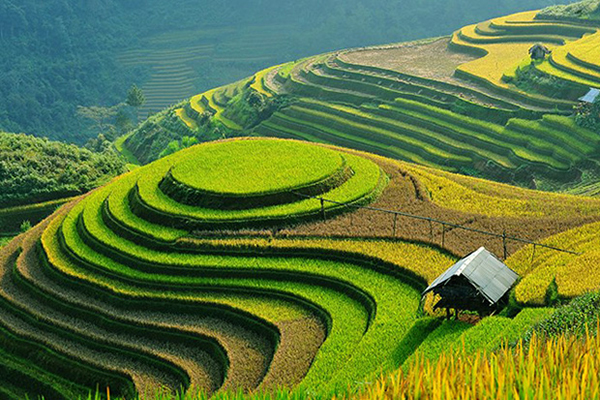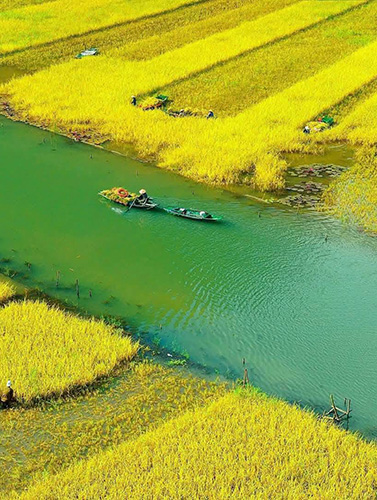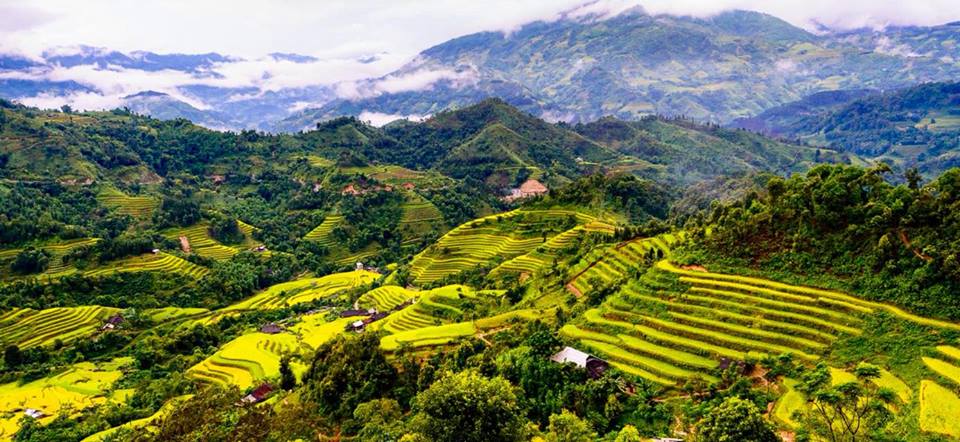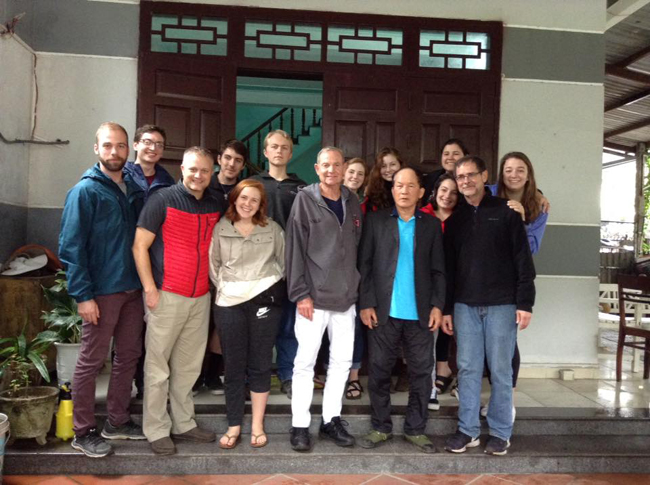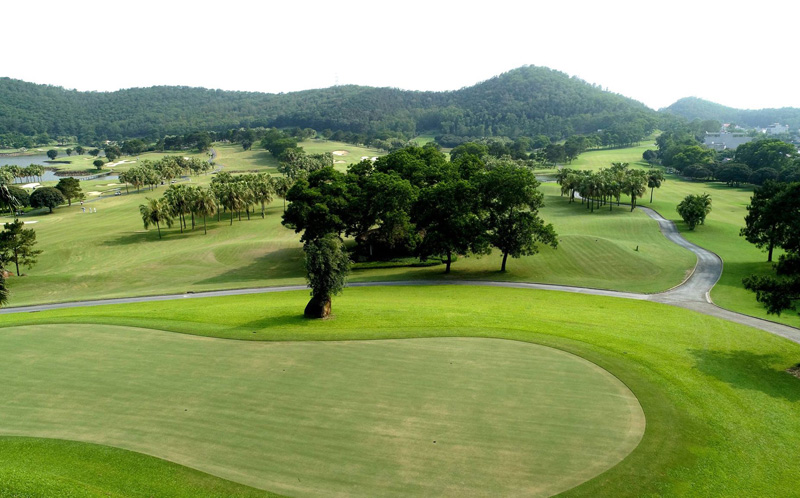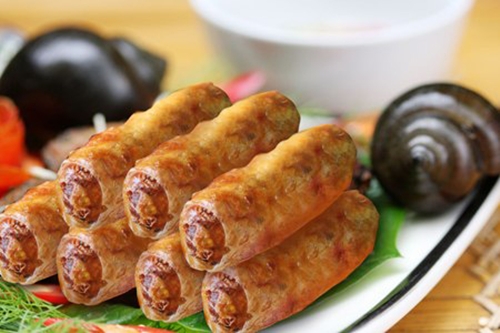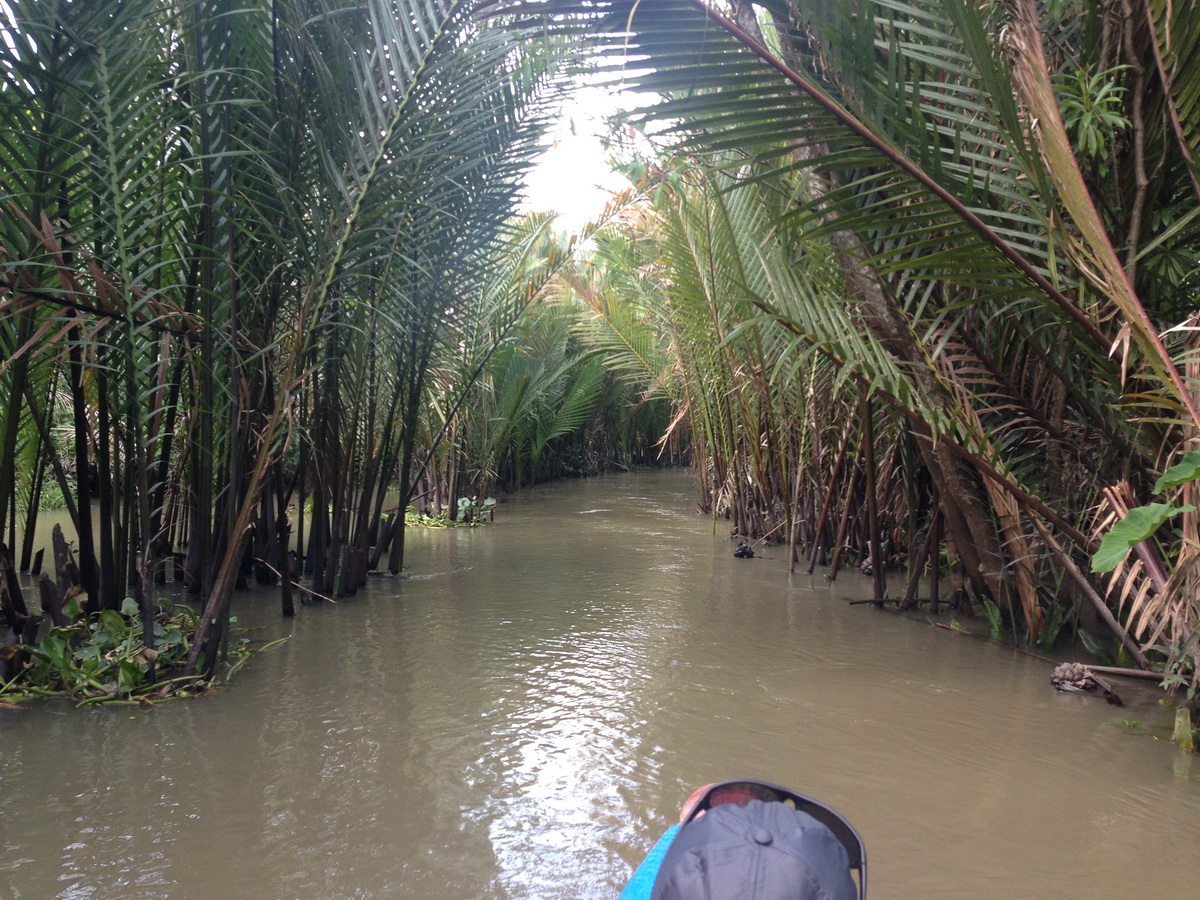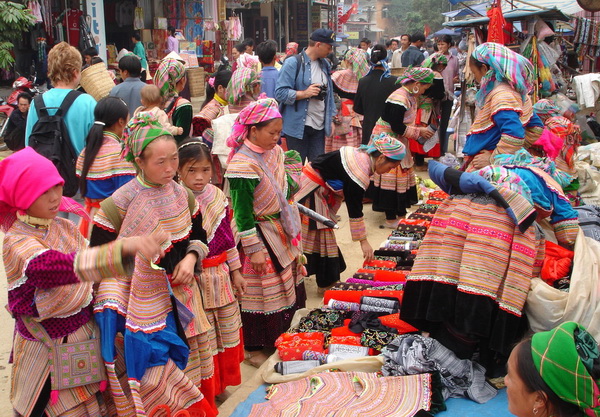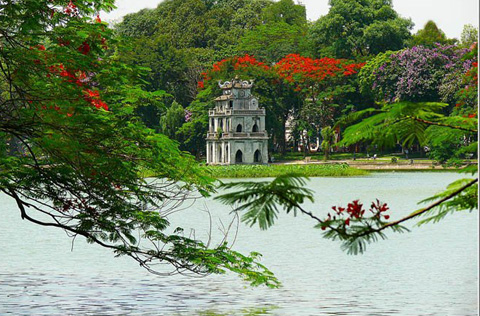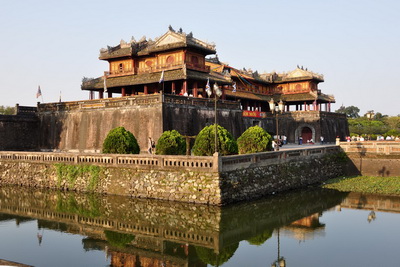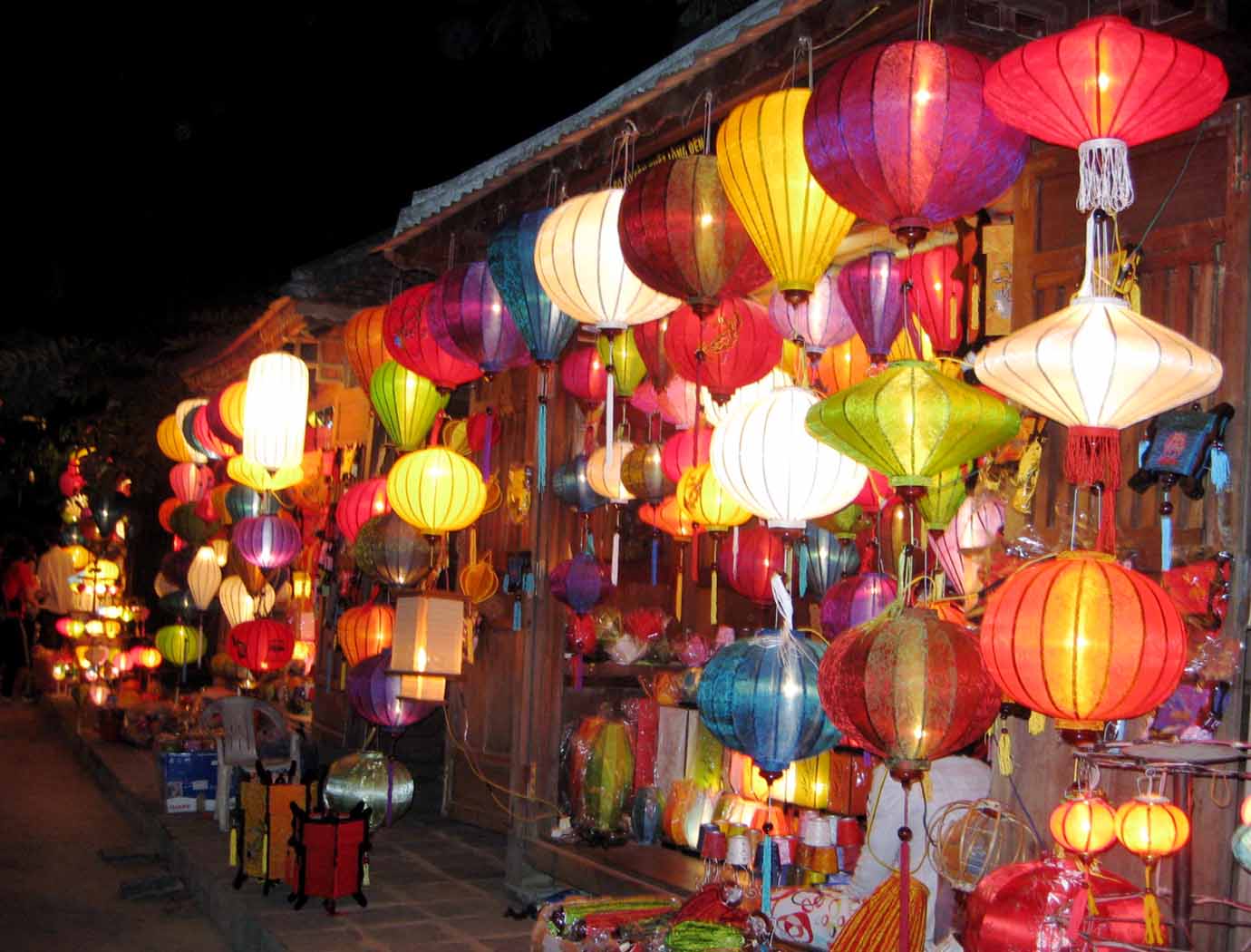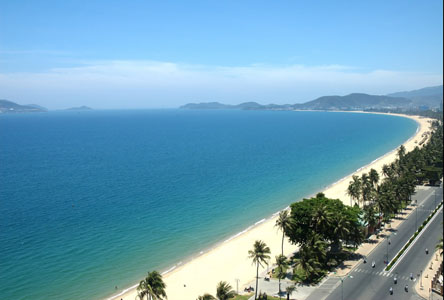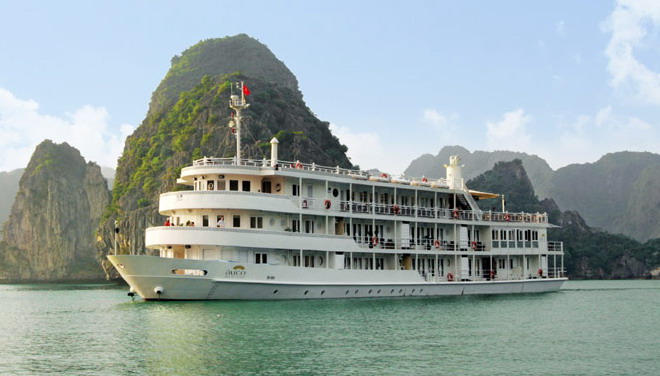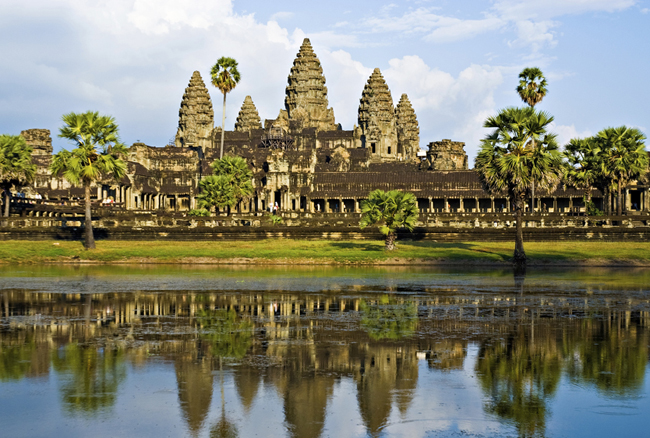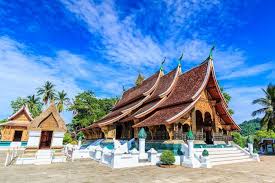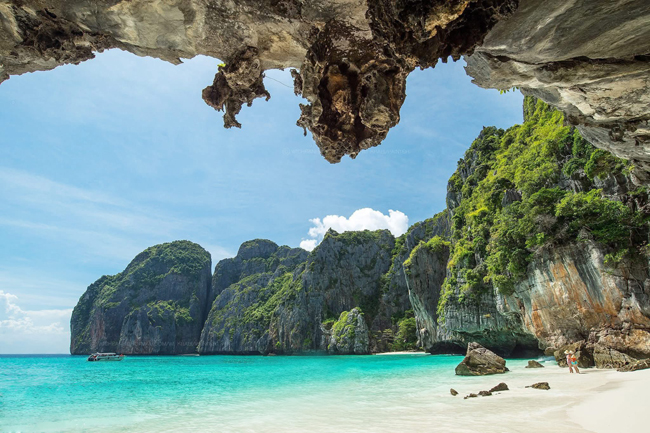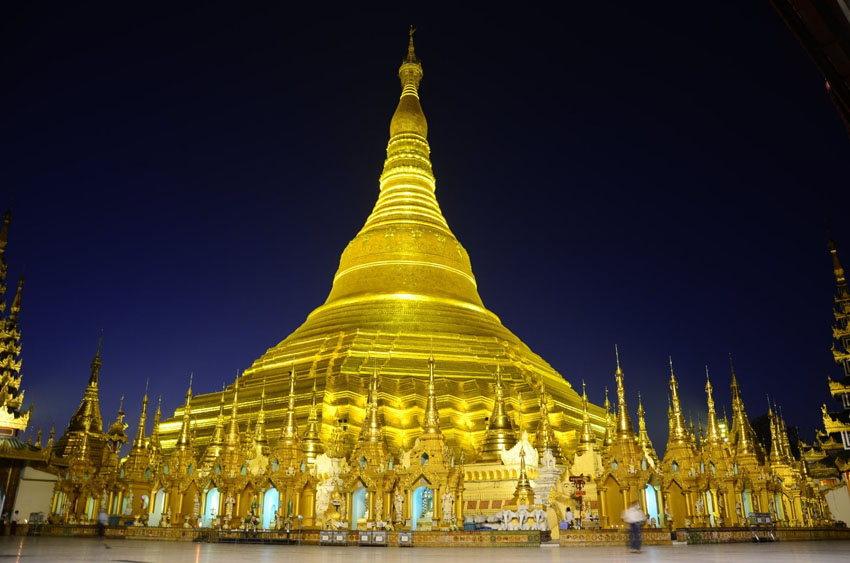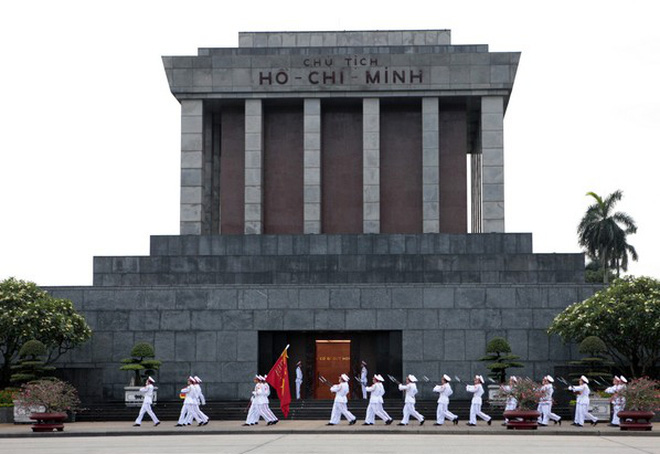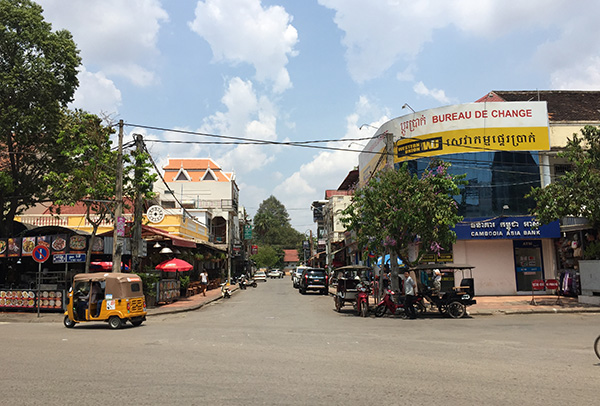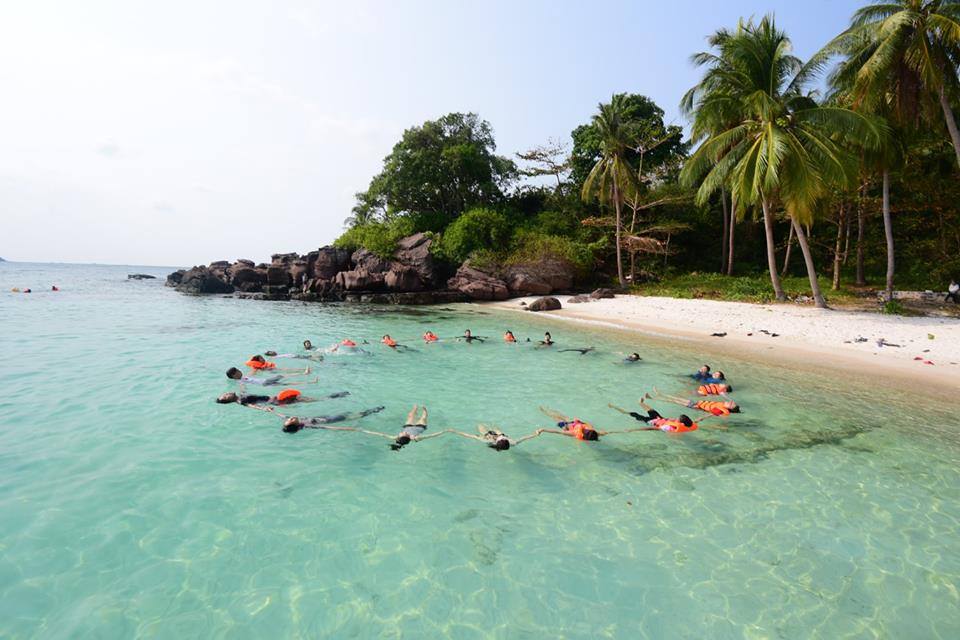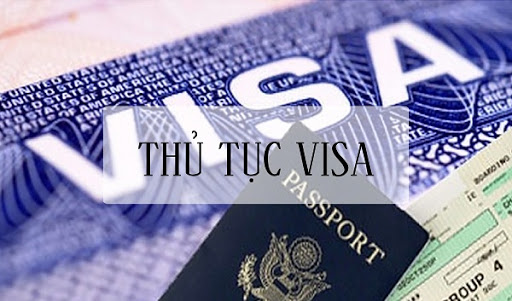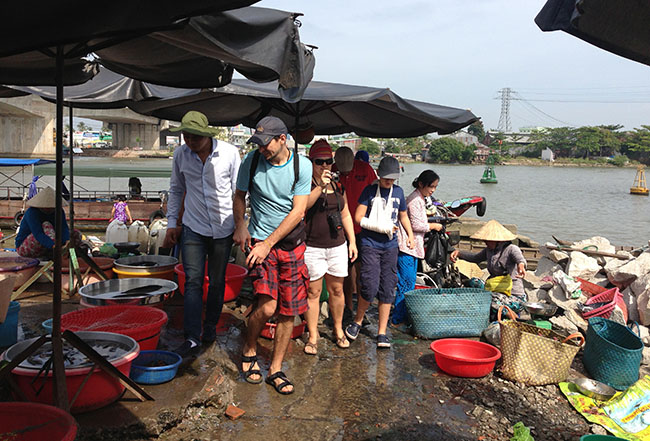A day with the H'Mong Hill Tribe up in northern Vietnam mountains
A H'mong ethnic village in the mountains of Lai Chau Province can make for a great weekend getaway from the hustle and bustle of city life with its cool weather and picturesque landscapes.
Sin Suoi Ho, situated at an altitude of 1,500 meters and 30 kilometers from Lai Chau Town in the namesake province, also offers visitors the opportunity to immerse themselves in the daily life and ethnic culture of the local H'mong people.
Morning: Local fair – daily ethnic life
In the local dialect, Sin Suoi Ho means "stream of gold". The air here is crisp and cool throughout the year.
Visitors are enthusiastically welcomed by locals and immediately served a cardamom drink in a bamboo tube. The spiced drink has a refreshing effect and soothes the throat.
The H'mong make this beverage since they think that travelers from the plains could get sore throats due to the dramatic temperature change. Cardamom is grown in Sin Suoi Ho’s forests and is the main source of income for locals. The spice is also used in their food.
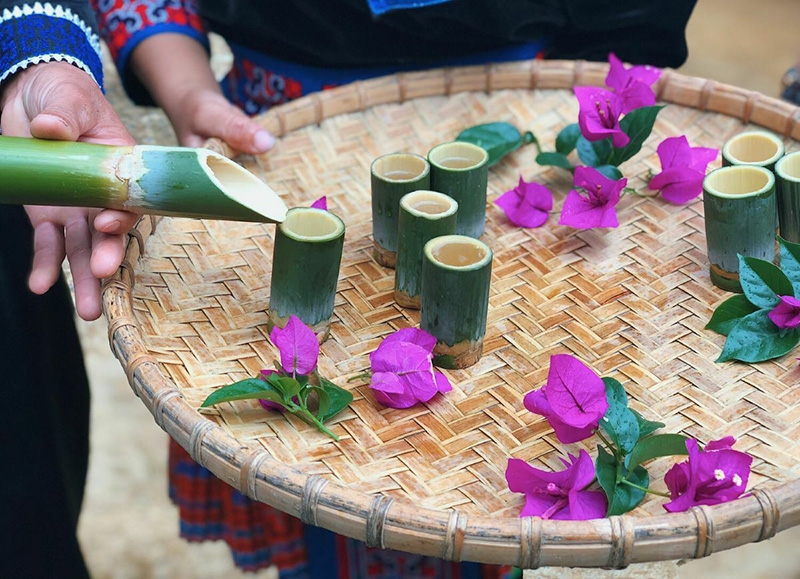
Cardamom drink in bamboo tubes.
Like other ethnic villages in the mountains, the Sin Suoi Ho fair is held every Saturday morning. The marketplace is a circle with slabs of rocks for stands. The items sold there are mostly produce grown by the locals or harvested in the forest. Traditional handmade costumes are also on offer.
Visitors can not only shop but also watch art performances, participate in games and try their hand at grinding corn. The traditional meat soup (thang co) here is also a must-try. In the H'mong language, thang co means a "big pot of water". It is traditionally made from the meat and offal of horses or buffaloes.
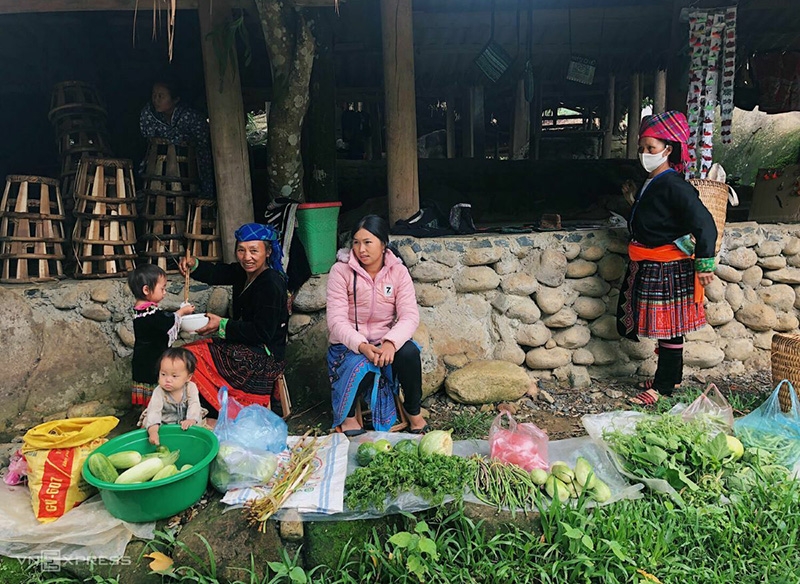
A corner of the weekly market in Sin Suoi Ho.
Before the marketplace was established, households mainly grew their own produce or bartered among themselves. If they wanted to visit a market, the nearest was 30 kilometers away in Lai Chau Town.
In 2015 authorities recognized Sin Suoi Ho as a destination for community-based tourism. It was then that its residents decided to set up a market. The fair was to be both a marketplace for the H'mong and a tourist attraction. The village chief, Vang A Chinh, led the initiative by donating a piece of his own land.
He says: "As village chief, it was my duty to help my people and be a role model. The market creates jobs for seniors; they can sell their poultry and livestock here without having to travel a great distance to earn some extra income."
The villagers planted trees, placed rocks and built other things needed for the market.
Sung Thi Ly, a local, says: "With our own marketplace, it is easier now to buy and sell. We can also sell our produce to tourists when they visit or barter with other people in the village."
At around 10 a.m. visitors begin to make their way around the village with locals acting as tour guides. They get to try their hand at authentic local tasks like sewing a traditional ethnic dress and making day cakes.
Noon: a taste of the northwest
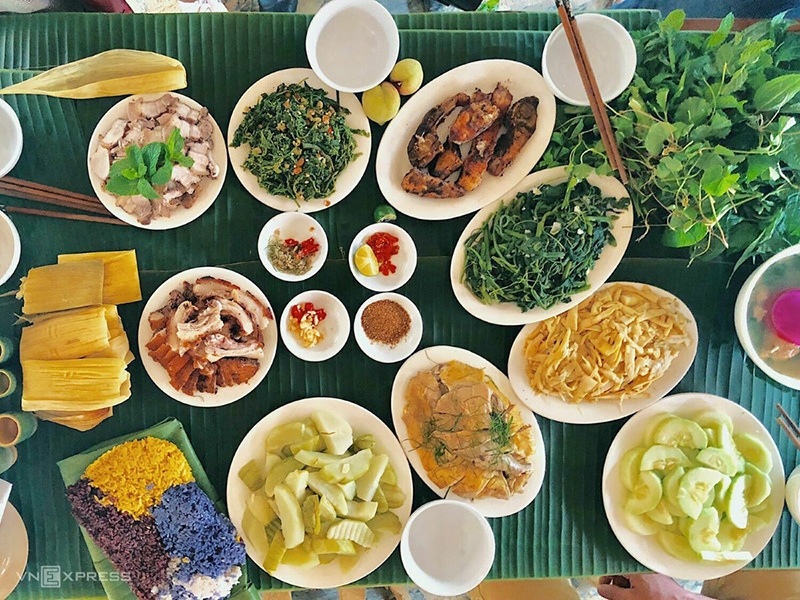
Northwestern Vietnamese cuisine.
At noon, visitors are brought back to their homestay accommodation for lunch and some rest. On a large banana leaf, a simple but delicious spread of traditional dishes awaits them. The meal usually consists of six or seven local dishes.
Their signature dish is roast pork wrapped in forest pepper leaf and dipped in a unique northwestern sauce called cham cheo. The forest pepper leaf has a sweet and sour flavor with a slight tang that makes the dish intriguing.
Tourists also get to try glutinous rice naturally colored with leaves. The bamboo shoot salad and fern salad are must-try specialties. Sometimes, guests are served local alcohol in eco-friendly bamboo tubes and cups.
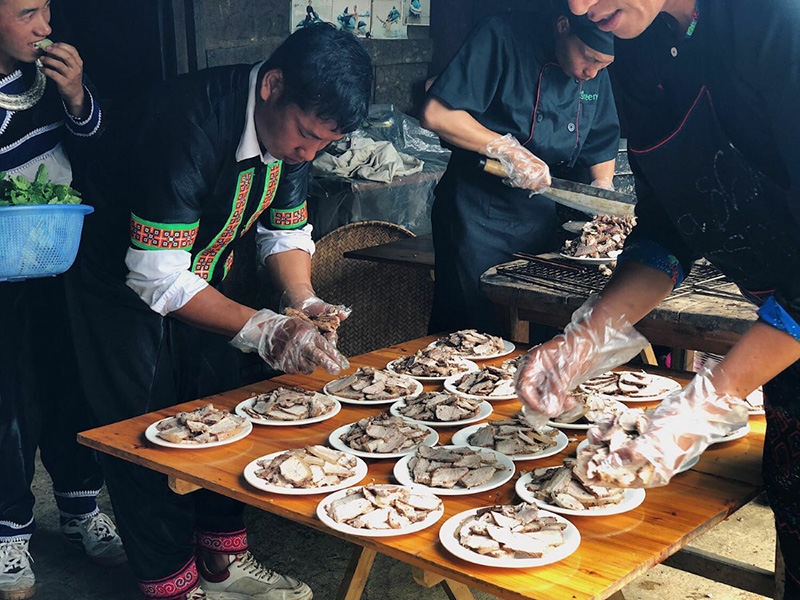
Grilled pork, a specialty of the region.
Afternoon: Heart Waterfall – Bungalow
Around 1.30 p.m. visitors begin the trek to Love Waterfall (Thac Tinh Yeu), also called Heart Waterfall. They pass through a primary forest and beautiful hills with tsao-ko cardamom trees. The distance is only over a kilometer but a round trip takes around two hours due to the steep paths.
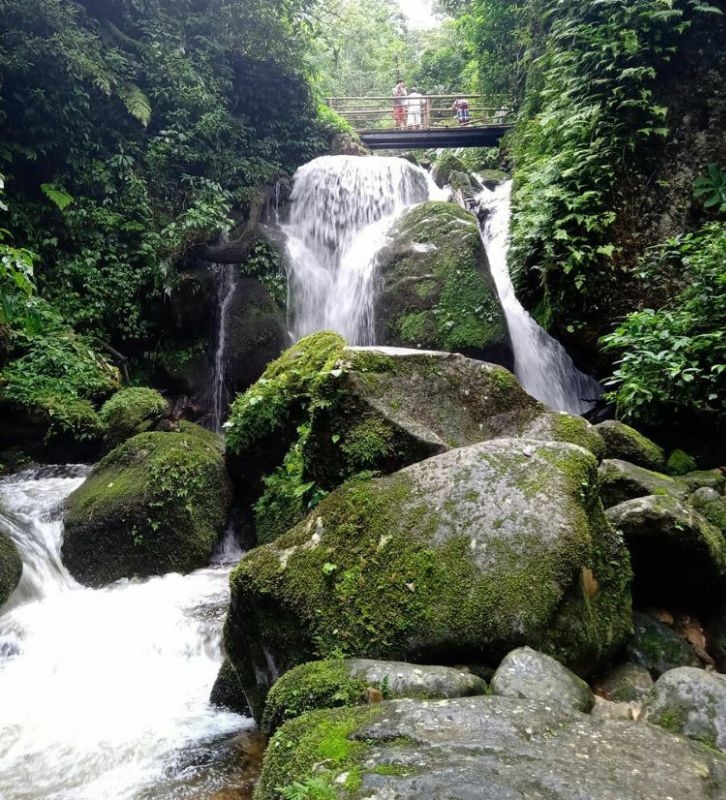
Love Waterfall.
At 4 p.m, visitors have the choice of visiting some homestays, gardens and bungalows. Children in the village usually gather here to play in the afternoon and visitors can interact or play soccer with them. Sunset at Sin Suoi Ho is another lovely sight.
With their patent honesty and affectionate attitude, the H'mong of Sin Suoi Ho have received great appreciation from tourists. They are friendly and eager to show visitors the culture of the H'mong.
"I’ve been to many places but felt most welcomed in Sin Suoi Ho," Thanh Huyen, a tourist, says.
"They are more than keen to share everything. I noticed that none of the locals smoke, drink or quarrel. They are well-mannered and courteous."
Children here like interacting with tourists.
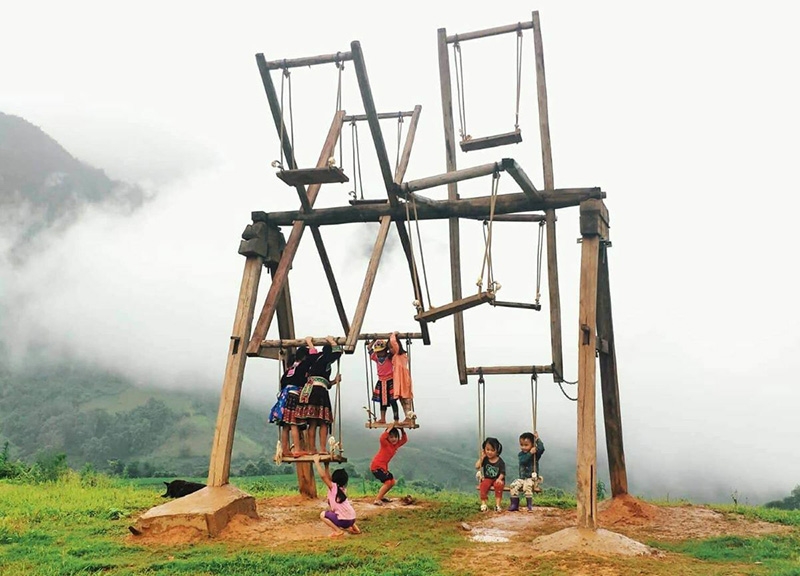
Children here reportedly ike interacting with tourists.
Evening: H'mong cultural performances
Tourists can spend the evening in the village and watch performances by locals. There are currently ten homestays, an inn and three bungalows in Sin Suoi Ho, all run by locals.
*Before traveling to Sin Suoi Ho
Transportation: It takes about an hour to get to Sin Suoi Ho from Lai Chau Town, about 30 km. Visitors can rent a motorbike or take a 29-seat bus or taxi from Lai Chau.
Weather: There are two seasons in Lai Chau: dry and wet. It rains from mid-April to early September. During the rainy season, the roads become slippery and harder to maneuver.
Scenery: Sin Suoi Ho has truly breathtaking sights to see throughout the year. When it gets close to the Lunar New Year holiday in early year, visitors can see cymbidium flowers blossoming beautifully. The rice terraces turn yellow in September and October, and wild sunflowers bloom in November and December.
Morning: Local fair – daily ethnic life
In the local dialect, Sin Suoi Ho means "stream of gold". The air here is crisp and cool throughout the year.
Visitors are enthusiastically welcomed by locals and immediately served a cardamom drink in a bamboo tube. The spiced drink has a refreshing effect and soothes the throat.
The H'mong make this beverage since they think that travelers from the plains could get sore throats due to the dramatic temperature change. Cardamom is grown in Sin Suoi Ho’s forests and is the main source of income for locals. The spice is also used in their food.

Cardamom drink in bamboo tubes.
Like other ethnic villages in the mountains, the Sin Suoi Ho fair is held every Saturday morning. The marketplace is a circle with slabs of rocks for stands. The items sold there are mostly produce grown by the locals or harvested in the forest. Traditional handmade costumes are also on offer.
Visitors can not only shop but also watch art performances, participate in games and try their hand at grinding corn. The traditional meat soup (thang co) here is also a must-try. In the H'mong language, thang co means a "big pot of water". It is traditionally made from the meat and offal of horses or buffaloes.

A corner of the weekly market in Sin Suoi Ho.
Before the marketplace was established, households mainly grew their own produce or bartered among themselves. If they wanted to visit a market, the nearest was 30 kilometers away in Lai Chau Town.
In 2015 authorities recognized Sin Suoi Ho as a destination for community-based tourism. It was then that its residents decided to set up a market. The fair was to be both a marketplace for the H'mong and a tourist attraction. The village chief, Vang A Chinh, led the initiative by donating a piece of his own land.
He says: "As village chief, it was my duty to help my people and be a role model. The market creates jobs for seniors; they can sell their poultry and livestock here without having to travel a great distance to earn some extra income."
The villagers planted trees, placed rocks and built other things needed for the market.
Sung Thi Ly, a local, says: "With our own marketplace, it is easier now to buy and sell. We can also sell our produce to tourists when they visit or barter with other people in the village."
At around 10 a.m. visitors begin to make their way around the village with locals acting as tour guides. They get to try their hand at authentic local tasks like sewing a traditional ethnic dress and making day cakes.
Noon: a taste of the northwest

Northwestern Vietnamese cuisine.
At noon, visitors are brought back to their homestay accommodation for lunch and some rest. On a large banana leaf, a simple but delicious spread of traditional dishes awaits them. The meal usually consists of six or seven local dishes.
Their signature dish is roast pork wrapped in forest pepper leaf and dipped in a unique northwestern sauce called cham cheo. The forest pepper leaf has a sweet and sour flavor with a slight tang that makes the dish intriguing.
Tourists also get to try glutinous rice naturally colored with leaves. The bamboo shoot salad and fern salad are must-try specialties. Sometimes, guests are served local alcohol in eco-friendly bamboo tubes and cups.

Grilled pork, a specialty of the region.
Afternoon: Heart Waterfall – Bungalow
Around 1.30 p.m. visitors begin the trek to Love Waterfall (Thac Tinh Yeu), also called Heart Waterfall. They pass through a primary forest and beautiful hills with tsao-ko cardamom trees. The distance is only over a kilometer but a round trip takes around two hours due to the steep paths.

Love Waterfall.
At 4 p.m, visitors have the choice of visiting some homestays, gardens and bungalows. Children in the village usually gather here to play in the afternoon and visitors can interact or play soccer with them. Sunset at Sin Suoi Ho is another lovely sight.
With their patent honesty and affectionate attitude, the H'mong of Sin Suoi Ho have received great appreciation from tourists. They are friendly and eager to show visitors the culture of the H'mong.
"I’ve been to many places but felt most welcomed in Sin Suoi Ho," Thanh Huyen, a tourist, says.
"They are more than keen to share everything. I noticed that none of the locals smoke, drink or quarrel. They are well-mannered and courteous."
Children here like interacting with tourists.

Children here reportedly ike interacting with tourists.
Evening: H'mong cultural performances
Tourists can spend the evening in the village and watch performances by locals. There are currently ten homestays, an inn and three bungalows in Sin Suoi Ho, all run by locals.
*Before traveling to Sin Suoi Ho
Transportation: It takes about an hour to get to Sin Suoi Ho from Lai Chau Town, about 30 km. Visitors can rent a motorbike or take a 29-seat bus or taxi from Lai Chau.
Weather: There are two seasons in Lai Chau: dry and wet. It rains from mid-April to early September. During the rainy season, the roads become slippery and harder to maneuver.
Scenery: Sin Suoi Ho has truly breathtaking sights to see throughout the year. When it gets close to the Lunar New Year holiday in early year, visitors can see cymbidium flowers blossoming beautifully. The rice terraces turn yellow in September and October, and wild sunflowers bloom in November and December.

